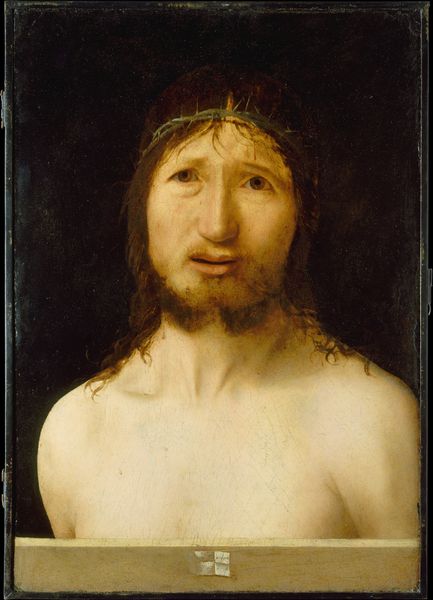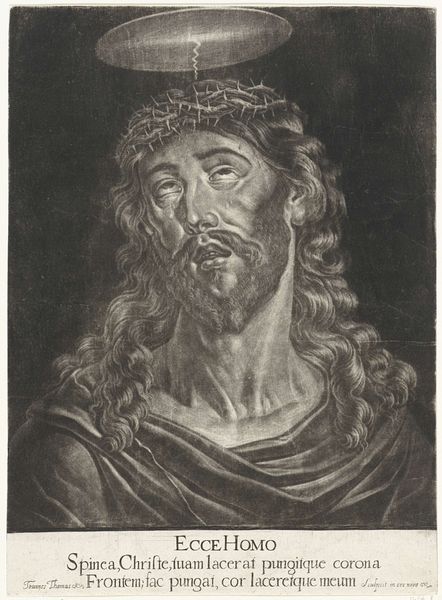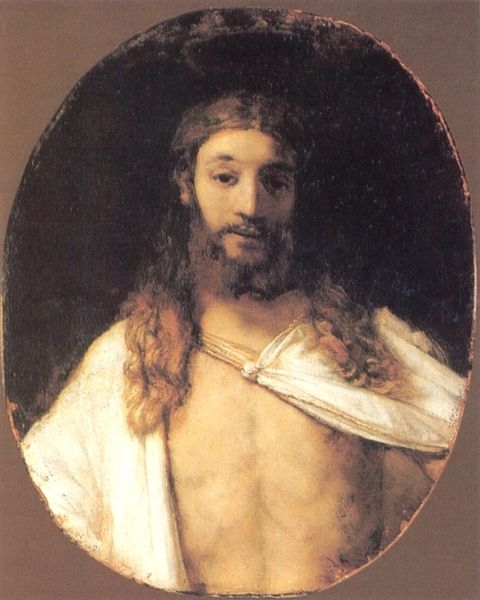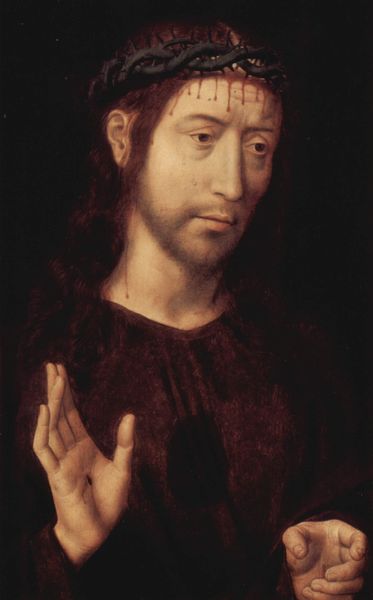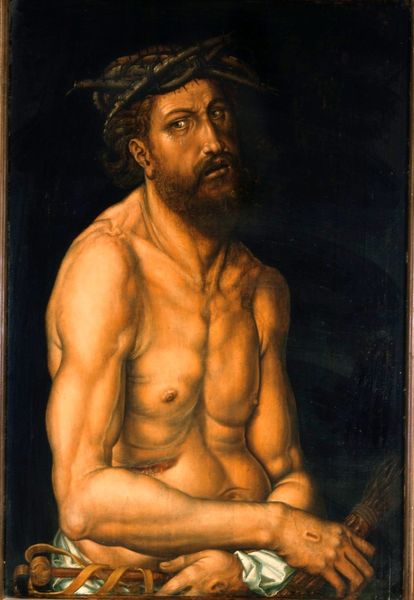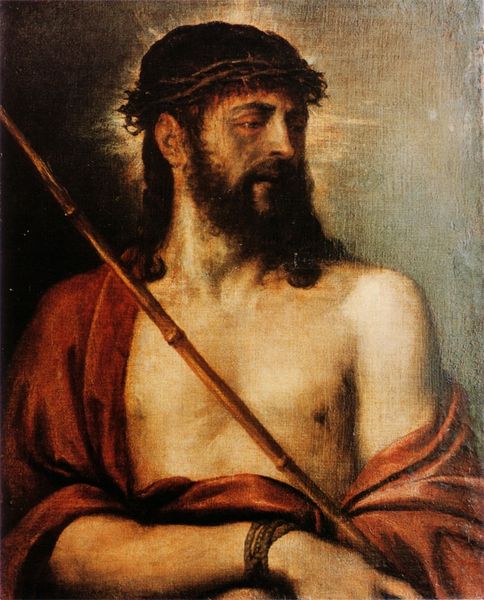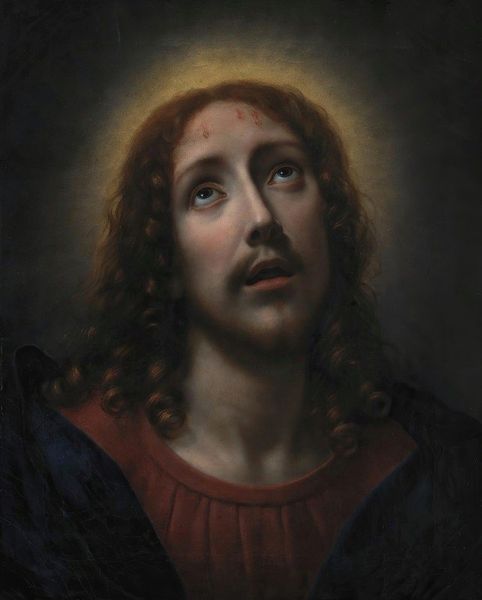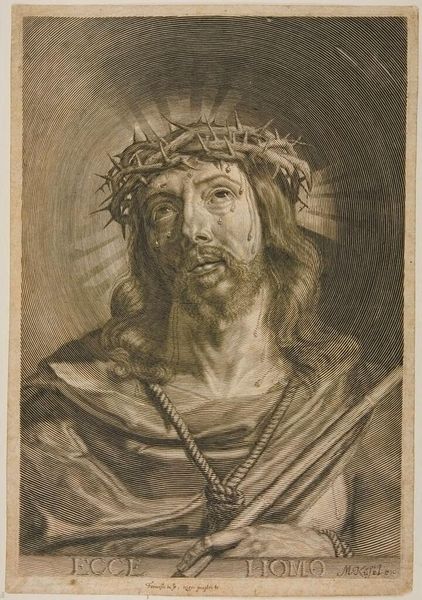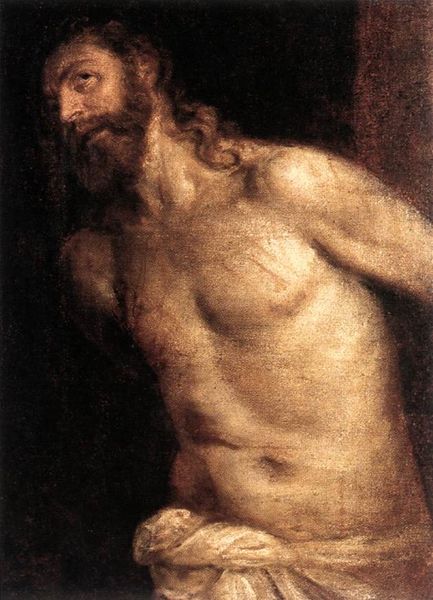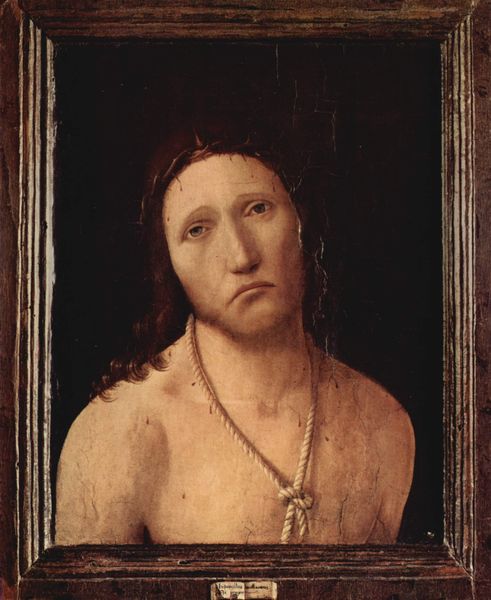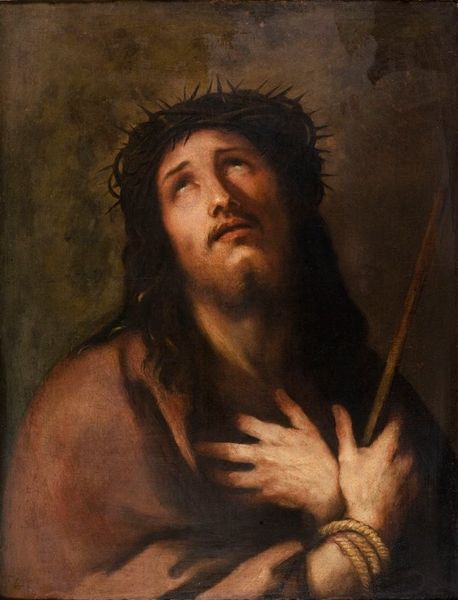
painting, oil-paint
#
portrait
#
painting
#
oil-paint
#
oil painting
#
italian-renaissance
#
realism
#
christ
Dimensions: 42.5 x 30.5 cm
Copyright: Public domain
Curator: The 'Ecce Homo' by Antonello da Messina, dating back to around 1470...it just throws you right in, doesn't it? The rawness of it… like peering into a soul laid bare. Editor: Yes, my initial reaction is discomfort. The suffering is so intensely portrayed. It demands a reckoning with what it means to witness pain, to be confronted by the spectacle of suffering, really. Curator: Absolutely. Messina gets right up close; he denies us that safe distance. And those eyes— they’re not pleading so much as…accepting. Resigned, maybe. It's almost like he's inviting us into the quietude of his suffering. I think what unsettles me the most is his complete lack of ornamentation. The austerity seems so intentional; Messina really strips away every single layer until there’s just this essential humanity exposed. Editor: This minimalist approach is incredibly powerful precisely because it centers the embodied experience of Christ’s pain, allowing us to understand it not just as religious allegory but as a stark reminder of our own mortality and the systemic oppressions that continue to inflict pain and suffering on vulnerable populations. What I mean by this is how the image resonates across diverse identities and sociopolitical situations. Curator: Precisely! The humanity resonates universally across gender, race, socioeconomic status. I think we feel such a strange intimacy with the subject. There’s a peculiar honesty that makes us want to protect him, console him. And yet, Messina positions him so starkly—so definitively alone. It is an impressive technique. Editor: Right, this isn’t just about passive observation; Messina forces the viewer into an active role. And the wooden ledge! That subtle division between our world and Christ's. It acts as this very potent reminder of the distance between the privileged and the oppressed. That separation, that imposed boundary, is something so very powerful in contemporary discourse. It asks how we engage with those experiencing marginalization. Curator: You know, it strikes me how little the theatricality you might expect there is. Messina goes in for an understated intensity that still radiates hundreds of years later. What does that say, do you think? Editor: It shows us the ongoing necessity of bearing witness and the continued need for resistance, resilience, and ultimately, the transformative power of solidarity and compassion. I will ponder this longer, I am certain. Curator: Me too, that wooden boundary you noticed really does make me see things differently now. This experience confirms how timeless and essential a true artist’s perception really is.
Comments
No comments
Be the first to comment and join the conversation on the ultimate creative platform.
